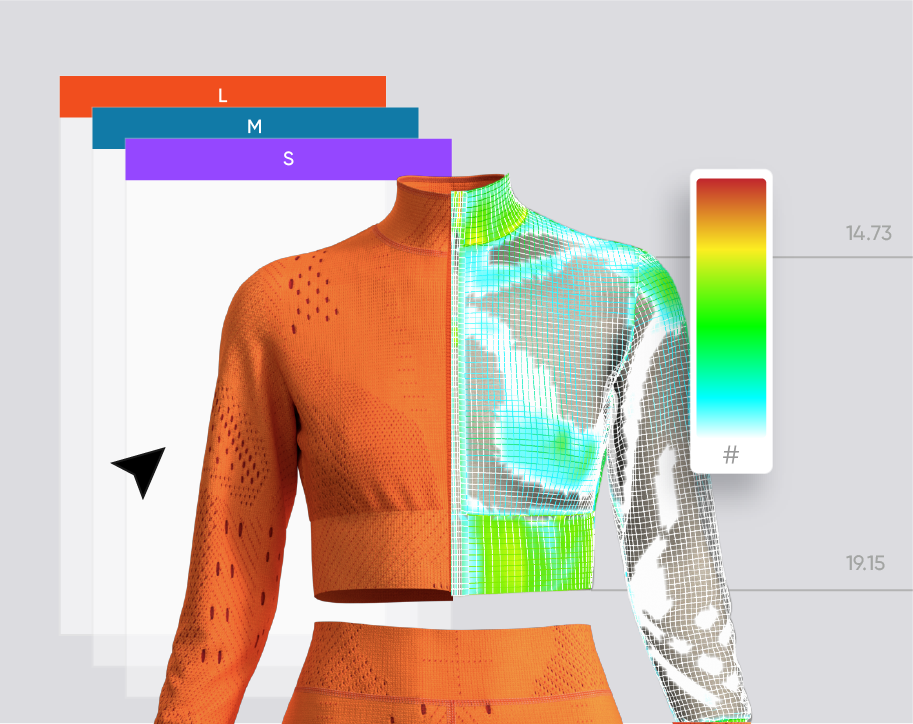What’s New in 2025.1.3: Faster, Smarter Product Development
Discover Browzwear’s new features that help fashion teams work faster, cut errors, and improve collaboration from design to production.
April 4, 2025

A right fit in clothing is key to customer satisfaction. Have you ever picked out a garment that looked perfect on the rack, only to find it doesn't fit when you try it on? Maybe it’s a pair of jeans that doesn’t sit quite right at the waist or a blazer that pulls at the shoulders. Ill-fitting clothing can quickly turn excitement into disappointment.
At its core, "fit" is all about the relationship between a garment and the wearer’s body, shaping not just how comfortable we feel but also how we present ourselves to the world. While achieving the perfect fit has always been a challenge for the fashion industry, digital product development tools are changing the game, giving brands the ability to redefine fit, test quickly, and create designs that truly cater to their customers' diverse needs.
Fit in clothing is how a garment aligns with the wearer’s body, shaped by factors like proportions, measurements, and ease allowance. These technical details ensure that a garment not only meets its intended dimensions but also allows for movement and comfort. For example, ease allowance adds just enough extra space to ensure that a fitted dress doesn’t feel restrictive or that a relaxed hoodie stays effortlessly cozy.
Fit comes in many styles—slim and form-fitting, relaxed and oversized, or tailored and structured for a polished look. Yet, fit is highly personal—what feels just right for one person might not work for another. Preferences are influenced by body types, cultural norms, and personal style, making fit as much about individuality as it is about numbers on a measuring tape.
Fit is a key factor in a garment's success and in keeping customers happy. When clothing doesn’t fit well, it’s one of the top reasons for returns, leaving shoppers frustrated and less likely to buy from the same brand again. On the other hand, brands that consistently deliver well-fitting, high-quality pieces build trust and loyalty, encouraging repeat business and stronger customer relationships.
But the importance of fit goes beyond customer satisfaction—it’s also critical for sustainability. By getting the fit right, brands can reduce returns and excess inventory, cut down on waste, and lower their environmental footprint. In this sense, fit isn’t just about looking good or feeling comfortable—it’s a fundamental part of creating a responsible and successful fashion business.

Achieving the perfect fit is not easy, and several challenges add to the complexity. The wide variety of body shapes and sizes makes it difficult to create garments that suit everyone—what works perfectly for one person might need major adjustments for another.
On top of that, fabrics behave differently; some stretch and drape in ways that can significantly impact how a garment fits. Traditional methods of pattern-making and prototyping only add to the struggle, often relying on manual, time-intensive processes that leave room for mistakes and inefficiencies. These factors combined make perfecting fit a constant challenge for designers and brands.
Digital product development software is changing how brands approach fit. Using digital avatars representing a wide variety of body shapes and sizes, designers can easily visualize how garments look and feel on different individuals. Virtual garment simulation allows real-time testing of fit and fabric behavior, removing the guesswork and inefficiencies of traditional methods. Instant adjustments to patterns and designs ensure greater accuracy and save time.

One of the latest advancements in this space is the integration of VitalFit’s soft body technology with Browzwear’s VStitcher. Brands can test their existing patterns using VitalFit directly within VStitcher, combining advanced human body modeling with precise garment simulation. This integration allows users to visualize fit attributes through a technical view with multiple layers, adding a deeper level of insight into how garments interact with body shapes.
In addition, VitalFit now supports compatible Alvanon Virtual AlvaForms, enabling brands to maintain consistency with industry-standard fit models while benefiting from VitalFit’s advanced capabilities. These seamless connections between platforms make it easier for teams to move confidently through the product development cycle—reducing iterations, improving accuracy, and ultimately delivering better-fitting garments to consumers.

By utilizing digital product development software and integrations like VitalFit and VStitcher, brands can better meet customer expectations, minimize returns, and tackle the persistent fit challenges in the fashion industry.
Here are some proof points highlighting the impact:
Speeds up product development. "Remarkably, a collection of 100 styles can be created in a matter of weeks by just one designer." Shehan Ferdinandis, MAS.
Reduce fit sample iterations. "With DPD, we reduced sample iterations by over 50%." Mark Donelly, Paladin.
Fit accuracy. "We have a complete trust in technology because we can understand how the garment will look once it's sampled. There is no need for mock-ups and trials, and we find that we even go straight to pre-production stage sometimes." Vanessa Bolt, KOOKAÏ.
The future of fit in fashion is set to become more personalized and precise than ever, thanks to advancements in body scanning and AI technologies. Hyper-personalized fit—where garments are tailored to an individual’s unique measurements and preferences—is quickly moving from concept to reality.
As the industry continues to evolve, tools like Browzwear are becoming indispensable for brands aiming to stay ahead. With its open approach to digital product development, Browzwear seamlessly integrates with emerging technologies such as body scanning and AI-driven analytics. This adaptability empowers fashion brands to enhance their workflows and embrace innovation without disruption, ensuring they remain leaders in fit optimization.
Discover Browzwear’s new features that help fashion teams work faster, cut errors, and improve collaboration from design to production.
Discover how 3D rendering revolutionizes fashion design with realistic prototypes, reduced waste, and innovative tools like Browzwear's VStitcher.
Discover how Browzwear’s colorway and graphic automation help fashion teams save hours on material updates, reduce errors, and speed up...